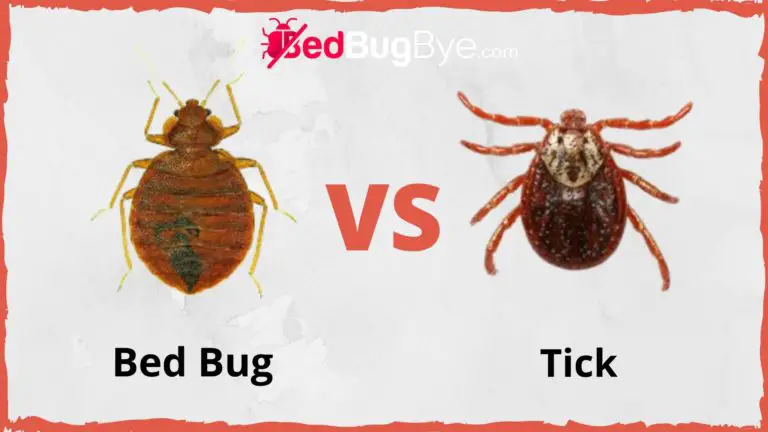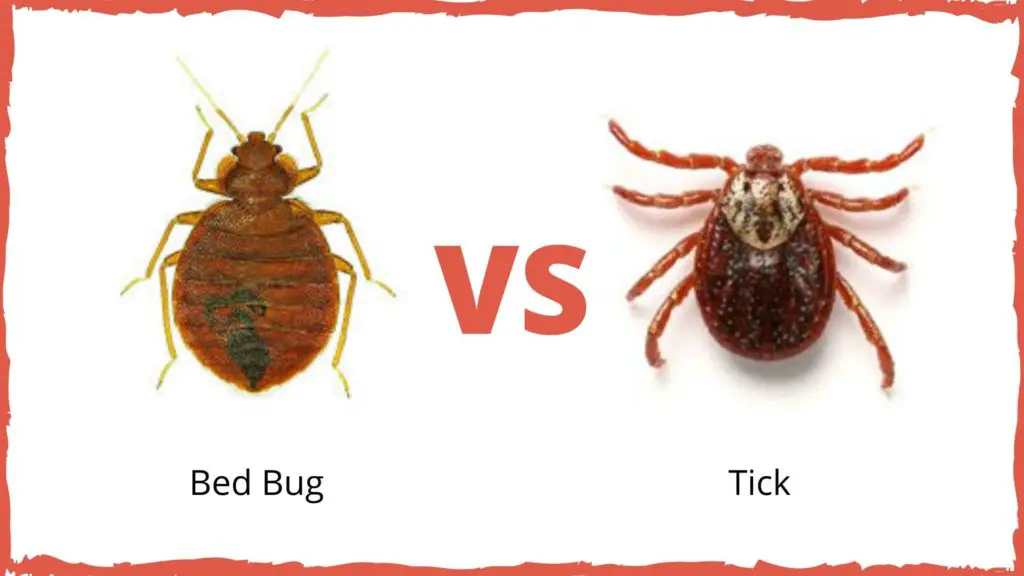


The first thing that comes to our mind when we talk about bed bugs vs ticks is the fact that they are both little annoying parasitic pets. Although they share some basic similarities that can easily confuse homeowners, there are also, some differences that could help us identify and then properly fight each category.
So, what are the major differences we should be aware of when we compare bed bug vs ticks?
To start with, a tick belongs to the Arachnid class. Although there are three basic families we can categorize ticks into, their species varies a lot depending on the specific location we meet them.
They usually prefer areas that have high humidity and that are warm. Bed bugs, on the other hand, belong to a particular class of parasites, known as Cimicidae.

Most of us believe that it is unlikely to spot bed bugs or ticks with the naked eye. Fortunately, that is a myth. You can see bed bugs very easily.
If you search for bed bugs thoroughly, you'll be able to spot them and possibly identify them. Bed bugs will normally have the size of an apple seed. On the other hand, nymph bed bugs can be a bit smaller, resembling the grain of rice.
Ticks have various sizes because there are a lot more species of them, compared to bed bugs. The smallest ones are no bigger than a pinhead, while a big tick can reach the size of a pencil eraser.
We cannot really separate those two types of parasites just by looking at their difference in size.
Bed bugs typically look like an apple seed. Their body looks roundish and their head appears as the tip of the seed.
When they feed, they usually expand their body and they appear larger, reddish and swollen.
Ticks, on the other hand, share a somewhat similar shape to bed bugs with the only difference that their body is actually a bit narrower. When they feed, their body gets also, enlarged.
Bed bugs are more stable in terms of their color. They typically have a dark brown shade of color. However, when they feed, they become swollen and they appear reddish-brown.
On the other hand, ticks usually have different colors. Although their body typically looks like the color of a bed bug, varying from dark brown to reddish-brown, ticks may have some markings, as well. A good example is a black-legged tick whose legs are darker than the rest of its body.
If you happen to see a white spot in the center of the parasite's body, then you can safely say that this parasite is actually a tick and not a bed bug.
A major difference in terms of color is also, apparent when the ticks feed themselves. They turn into a gray or rarely blue version of themselves, so you can then tell them easily apart from the reddish color of bed bugs.
Upon close inspection, bed bugs and ticks can be distinguished by the number of legs they have. Bed bugs have six legs, whereas ticks have eight legs.
The specific characteristics of the legs on a bed bug vs ticks are also quite different. The legs of a bed bug are typically thinner than those of a tick and they normally don't stick out from the rest of their body.
A tick, on the other hand, has two quite longer legs that curve upwards from their head and the other six legs are further back in their main body.
Although this difference is quite noticeable, you may not be able to tell apart the specific species of the parasite in front of you by counting their legs when their body is too small and narrow.
Both the bed bugs and the ticks are unable to fly or jump. Therefore, they move from place to place with the use of a host. People, animals, and objects can all fall victim to those little parasites. The natural habitat of those two categories of parasites is quite different.
Bed bugs will commonly hide inside furniture or attach themselves to luggage and personal objects, while ticks are mostly found in outdoor areas, like weeds, tall grasses, woods, and shrubs. Bed bugs can also, be found in the cracks of beds, headboards, and bed frames. They prefer to live hidden in areas near on under the bed because they typically attack humans during their sleep at night.
Therefore, if you notice that you get infected during your night sleep, then you should probably worry about bed bugs. On the other hand, if you notice that your pet or yourself only gets infected by a parasite's bite when you are outside, then the problem is ticks, not beg bugs.
The breeding habits of bed bugs and ticks are quite different. Since only a few species of ticks can reproduce in indoor places, like homes, owners who find themselves suffering from considerable numbers of pests indoors are normally coping with a bed bug problem, not a tick infection. In contrast, bed bug infestations start with only one female. That female will first infest your home and then lay her eggs somewhere safe and the whole infestation will rapidly start.
When bed bugs reproduce themselves, they choose to live in large clusters. Ticks, on the other hand, prefer to attack their hosts separately. For this reason, it is a bit more difficult to identify every one of them and then kill them.
Although the bite of a parasite can affect every single person in a whole different way, the appearance, location, and size of the bite on a person's skin is not the best technique to identify the species of the parasite. However, generally speaking, a quite reliable way to separate the bite produced by a tick to that of a bed bug relies a lot on the fact that bed bugs retreat to their nests after a bite, while ticks bury themselves to the skin of their victim. That makes them appear as if they don't have a head.
The fact that ticks can remain attached to our skin for hours, even days explains why they can transmit serious illnesses, like Lyme Disease, Ehrlichiosis, and Rickettsia to humans and pets. Bed bugs do not provoke any serious illnesses or damages to the human body but they still cause those irritating bumps, as well as itches on our skin.
In general, bed bugs are a lot more difficult to eliminate once and for all because they use to feed during the night and they hide in dark places during the day. Ticks can be seen more easily crawling on you, so you can then eliminate them quickly. Preventing the bite of a tick is also, easier if you are wearing some protective clothing when you have to go to known infested areas.
The difference in the whole breeding and infection process between those two types of parasites affects a lot their prevention and control techniques owners can use to protect themselves and their beloved pets. Bed bugs populations can easily get out of hand and for this reason, it is advisable that you use some professional pest control to prevent further infection. Regular pest control can also, help you prevent the spreading of those annoying insects. Moreover, it is really important to be extremely cautious when you unpack things and personal objects after a trip. Used furniture or clothing should also, be checked thoroughly before you get them home.
On the other hand, when we talk about ticks, as we mentioned above, it is most common to get the infection from outdoor activities and places. Therefore, avoiding tall grasses, shrubs, woods, and similar outdoor areas is the best way to prevent getting infected. Another great difference between bed bugs and ticks is the fact that the latter ones feed on both humans and pets. Bed bugs, however, feed only on humans.
It is true that bed bugs and ticks share a lot of similarities. Their general appearance, shape, size, and color look similar, they are both parasites that feed on humans and cause harm to their host, which can vary from mere itchiness to serious illnesses.
Both species can be prevented if you follow some strict safety rules and take some precautions particularly when you are in possibly infected areas. However, there are some distinct differences between those two types of parasites that can be detected upon close observation.
Apart from some small differences in their overall physical appearance, they have some different nesting and feeding behaviors, as well. Being able to identify bed bugs vs ticks from the very start can be the key to preventing further expansion and to finding the best means to eliminate those irritating little parasites once and for all.
